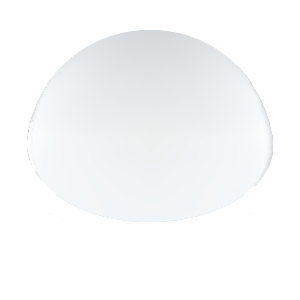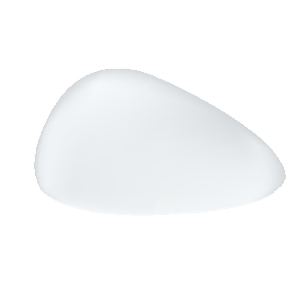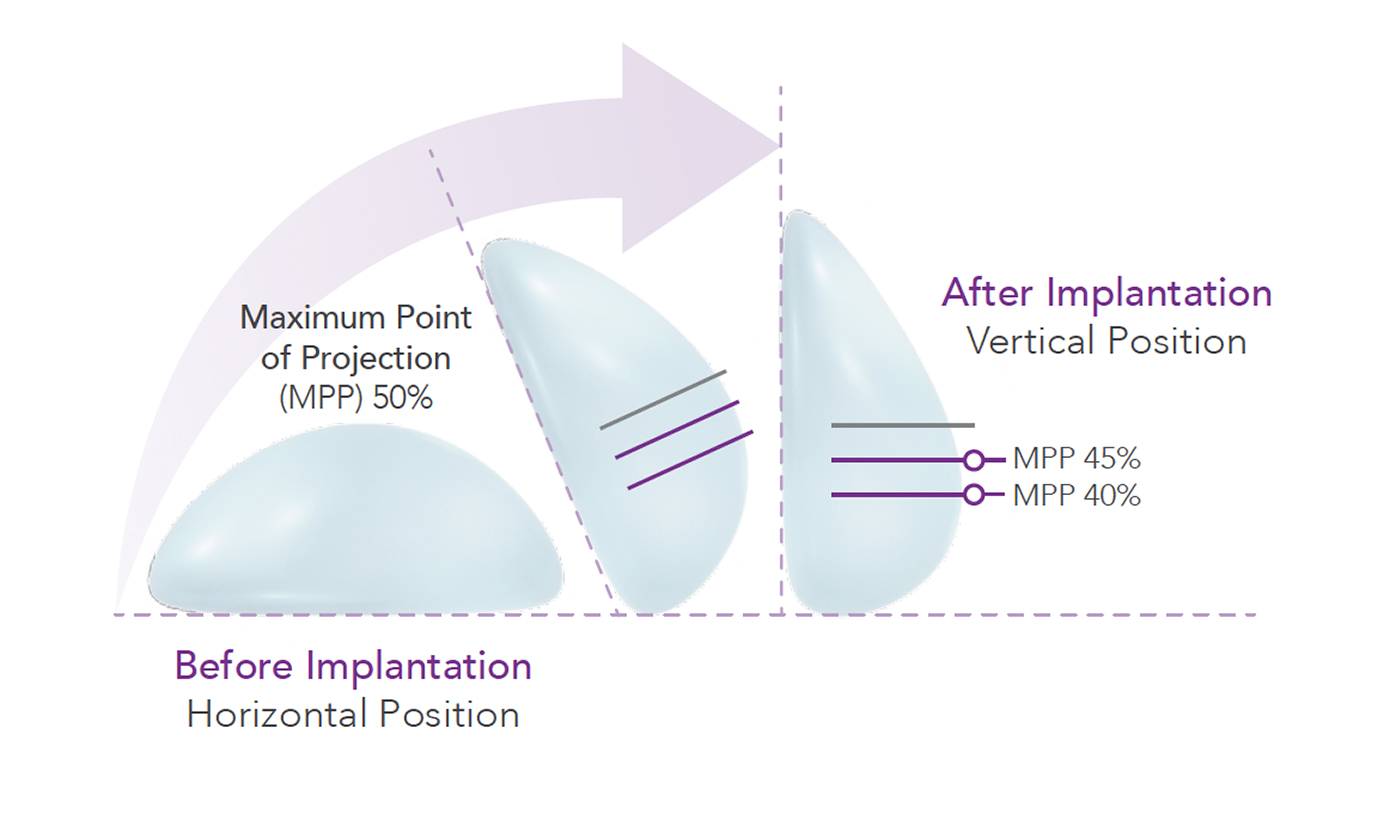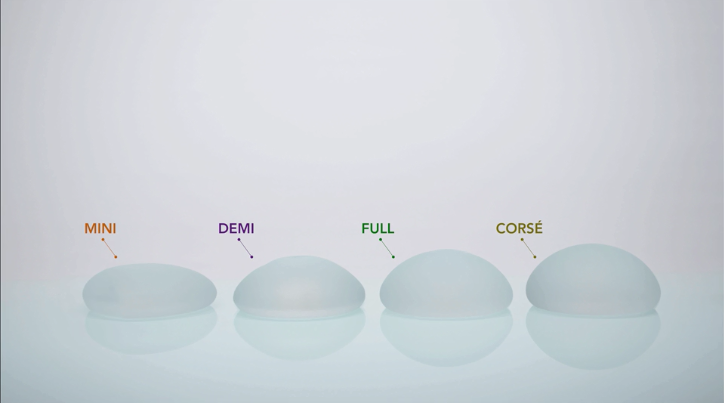Breast implant shape & size
After determining your implant filling, be it silicone or saline, it is now time to explore the various shapes, textures and sizes of breast implants.
Before moving on the pros and cons of a multitude of shapes and sizes for you to choose from, here are some introductory information on the types of shapes and sizes available on the market.
Types of breast implant shape
There are two main shapes available in the market, namely round and anatomical.

- Round breast implant shape
While a round shape can often provide more lift, cleavage and fullness, it may look less natural, especially when the implant is overfilled.

- Anatomical breast implant shape
Commonly referred to as a teardrop shaped or a contoured implant, this is commonly deemed as the more natural looking implant since it has a gently sloping contour which can allow it to retain its fullness at the top area of your breast. As compared to round shape implants, anatomical shape ones require more care in placement as they need to be tilted to follow the natural shape of your breast and ensure symmetry.

- Motiva Ergonomix™ implants
On top of the typical round and anatomical shaped implants, Motiva Ergonomix™ with TrueTissue Technology™ adjusts with gravity to your position to give you natural-looking breasts which mean that the breast implant is a combination of round and anatomical implants. These implants mimic the natural look of anatomical shaped implants, and do not have any complications associated with rotation or implant hardness. The four main projections are Mini, Demi, Semi and Corse. Out of the four, Corse is often the preferred choice for western clients.

It is important to note that in some women, particularly those with an adequate amount of good quality breast tissue to drape over the implant, that the shape of the implant may be less important to the overall aesthetic result. Regardless, shape is not a factor to be looked at in isolation. Other considerations, such as implant sizes, matter as well.
Types of breast implant size
A common difficulty faced by women who wish to undergo breast augmentation surgery lies in choosing the optimal size that also has a low risk of complications. The size of an implant can be determined by cubic centimetres (c.c.’s), a unit of measurement.
It is important to note that the moment you exceed the natural limits of your breast tissue, there can be a distortion of breast contour. Additionally, there is a chance that it can result in tissue damage such as breast tissue atrophy, overstretching and deformities. Other risks to consider includes numbness, pain, a longer recovery time and more. In such cases, reoperation may be required to rectify the damage. It is important to note that there is a possibility of some repercussions being irreversible.
Choosing the right size
- 3D imaging
To have an overall idea of how your breasts may look like post-augmentation, try 3D imaging and computerized simulation during your consultation with the surgeon. This personalised approach can be helpful in giving you a realistic look at how you may look like post-surgery.
- Photos
As part of your research, try looking at photos of women who are close to your physical frame. You can see how different breast sizes look like on their body for a better understanding.
- Try out various sizes
3D imaging and photos can only let you see how you may look like after the surgery. However, to get an actual feel of how heavy the implants may be, you can try on a variety of recommended breast implant sizers with your bra at your surgeon’s.
Conclusion
Regardless of which breast implant size or shape you choose, all breast implants are likely to be required to be removed or replaced over time. Frequent complications include, but are not limited to, capsular contracture, implant removal (with or without replacement) and reoperation. Other common complications are implant rupture, wrinkling, asymmetry, scarring, pain, and infection.
To know which type of implant is suitable for you, please do your own due diligence and seek the help of a professional.
